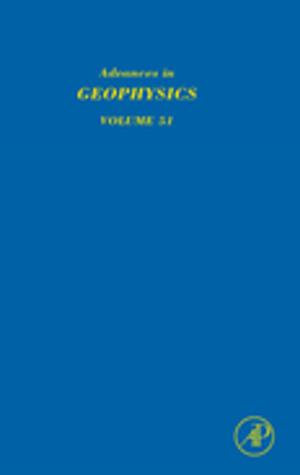Corrosion and its Consequences for Reinforced Concrete Structures
Nonfiction, Science & Nature, Technology, Construction & Construction Trades, Engineering| Author: | Raoul Francois, Stéphane Laurens, Fabrice Deby | ISBN: | 9780081023457 |
| Publisher: | Elsevier Science | Publication: | January 16, 2018 |
| Imprint: | ISTE Press - Elsevier | Language: | English |
| Author: | Raoul Francois, Stéphane Laurens, Fabrice Deby |
| ISBN: | 9780081023457 |
| Publisher: | Elsevier Science |
| Publication: | January 16, 2018 |
| Imprint: | ISTE Press - Elsevier |
| Language: | English |
Corrosion and its Consequences for Reinforced Concrete Structures serves as an indispensable guide for engineers, scientists and researchers, exploring the fundamental aspects of corrosion in reinforced concrete. Its originality lies in the coupling between the reinforcement corrosion of reinforced concrete and its mechanical behavior.The authors describe the specific theoretical foundations of the corrosion of steel in concrete and its interactions with the structural aspects, including service cracking and defects in the placement of concrete.
The book contains a study of the mechanisms of degradation of the mechanical behavior of reinforcements and the reinforced concrete composite, such as reduction of ductility, bearing capacity, redistribution of efforts by formation of plastic hinges and increase in the beam deflection in service. A diagnostic method based on corrosion-induced crack detection is presented in the book, and then paired with a recalculation method which allows us to predict the different aspects of the residual mechanical behavior. Several end-of-life ELS and ELU criteria are described, and the authors propose an approach to estimate the residual lifetime. Finally, the book presents the cathodic protection that allows the progression of corrosion to be contained within the corroded structures.
As well as academics, this book is aimed at civil engineers who are faced with the issue of corrosion in aging structures*.*
- Explores corrosion in concrete
- Examines the influence of pre-cracks on corrosion
- Discusses corrosion diagnostics and corrosion-induced cracks
- Presents residual mechanical properties of corroded structures: effect of corrosion on steel behavior, load-bearing capacity, yielding capacity, deflection of corroded beams and the effect of corrosion on bond
- Provides repair and maintenance considerations: cathodic protection and carbon fiber reinforced polymer used to strengthen and restore bearing capacity
Corrosion and its Consequences for Reinforced Concrete Structures serves as an indispensable guide for engineers, scientists and researchers, exploring the fundamental aspects of corrosion in reinforced concrete. Its originality lies in the coupling between the reinforcement corrosion of reinforced concrete and its mechanical behavior.The authors describe the specific theoretical foundations of the corrosion of steel in concrete and its interactions with the structural aspects, including service cracking and defects in the placement of concrete.
The book contains a study of the mechanisms of degradation of the mechanical behavior of reinforcements and the reinforced concrete composite, such as reduction of ductility, bearing capacity, redistribution of efforts by formation of plastic hinges and increase in the beam deflection in service. A diagnostic method based on corrosion-induced crack detection is presented in the book, and then paired with a recalculation method which allows us to predict the different aspects of the residual mechanical behavior. Several end-of-life ELS and ELU criteria are described, and the authors propose an approach to estimate the residual lifetime. Finally, the book presents the cathodic protection that allows the progression of corrosion to be contained within the corroded structures.
As well as academics, this book is aimed at civil engineers who are faced with the issue of corrosion in aging structures*.*
- Explores corrosion in concrete
- Examines the influence of pre-cracks on corrosion
- Discusses corrosion diagnostics and corrosion-induced cracks
- Presents residual mechanical properties of corroded structures: effect of corrosion on steel behavior, load-bearing capacity, yielding capacity, deflection of corroded beams and the effect of corrosion on bond
- Provides repair and maintenance considerations: cathodic protection and carbon fiber reinforced polymer used to strengthen and restore bearing capacity















